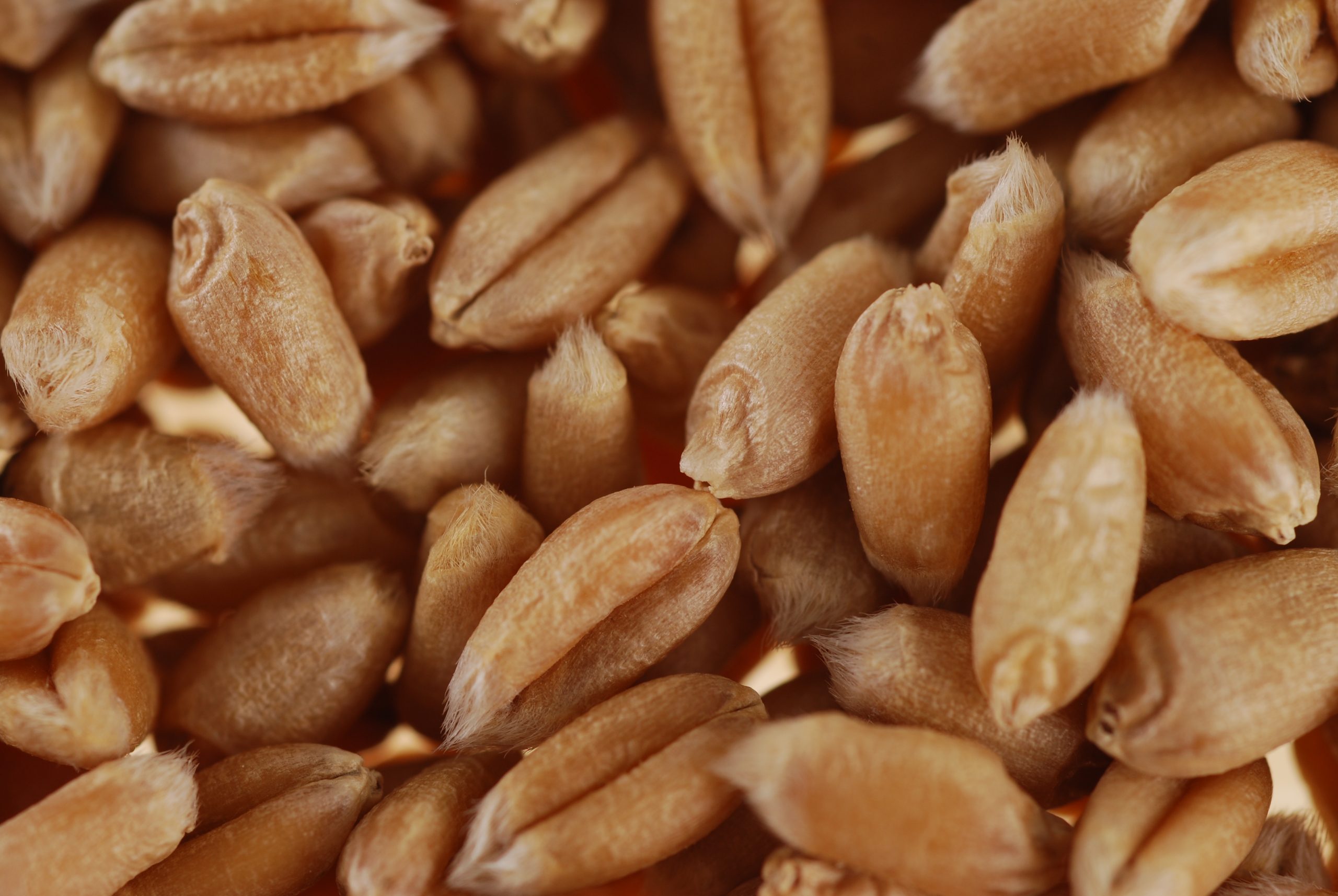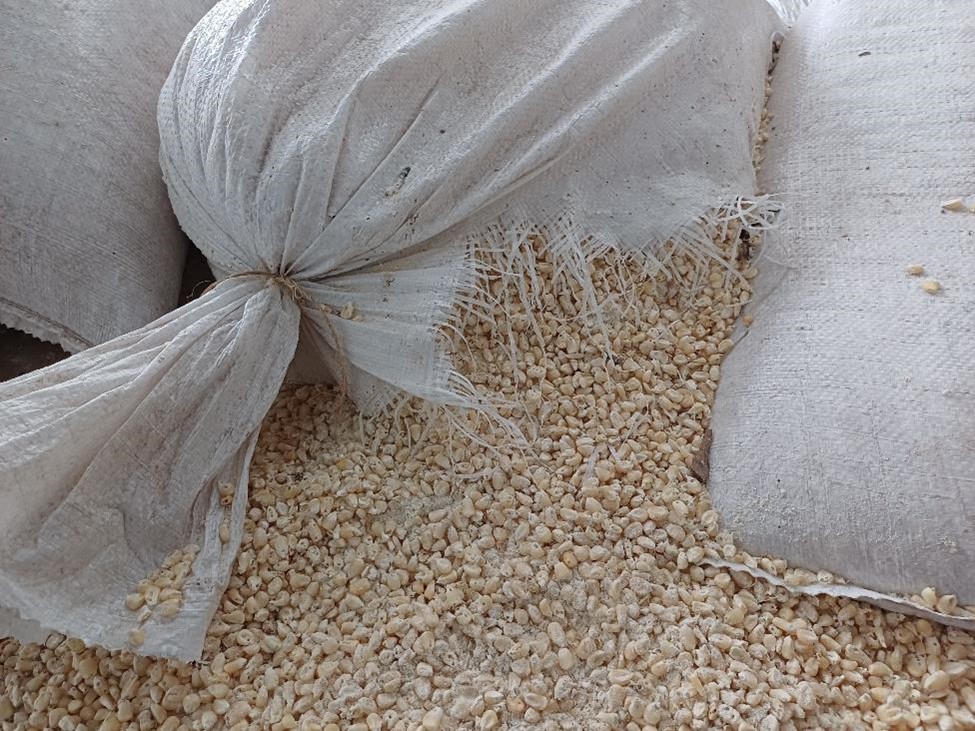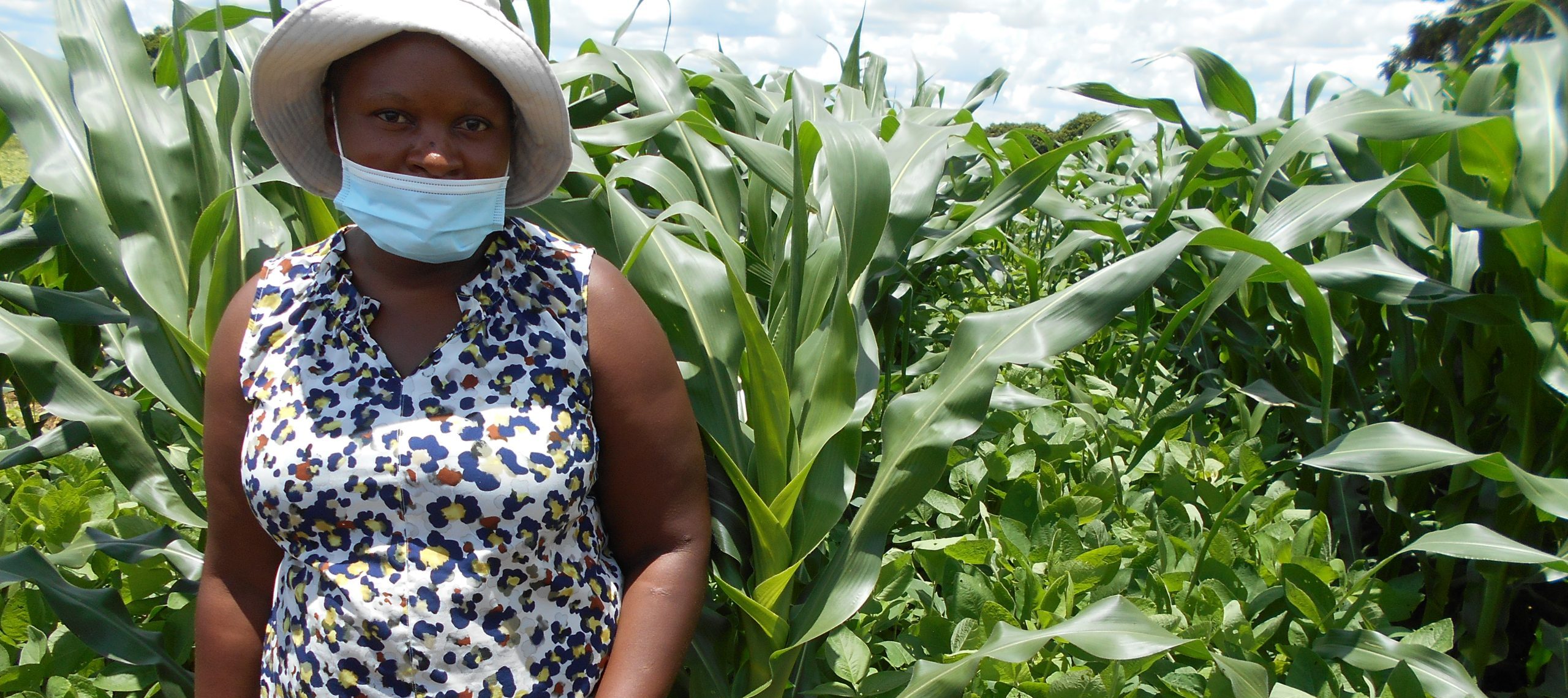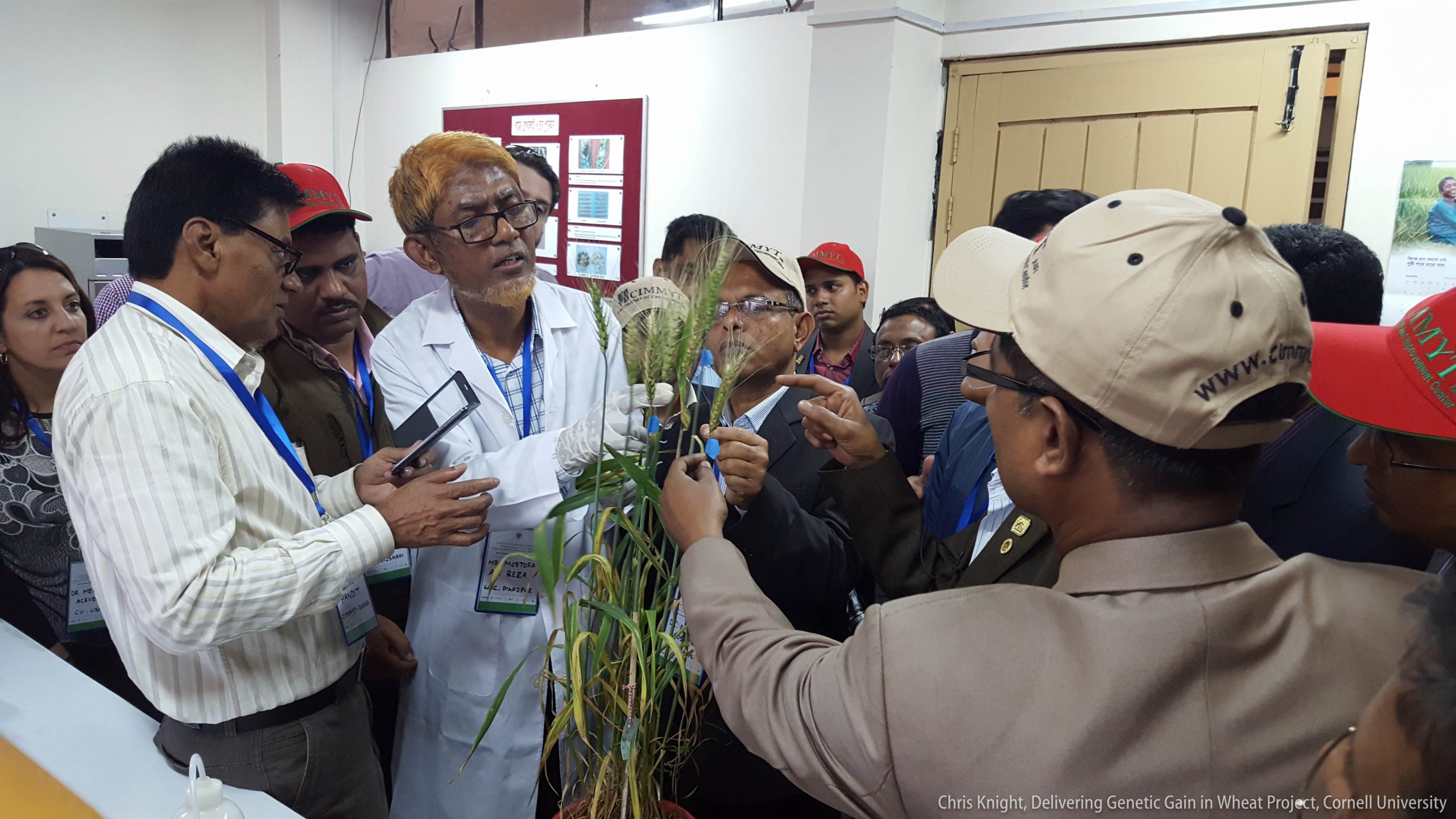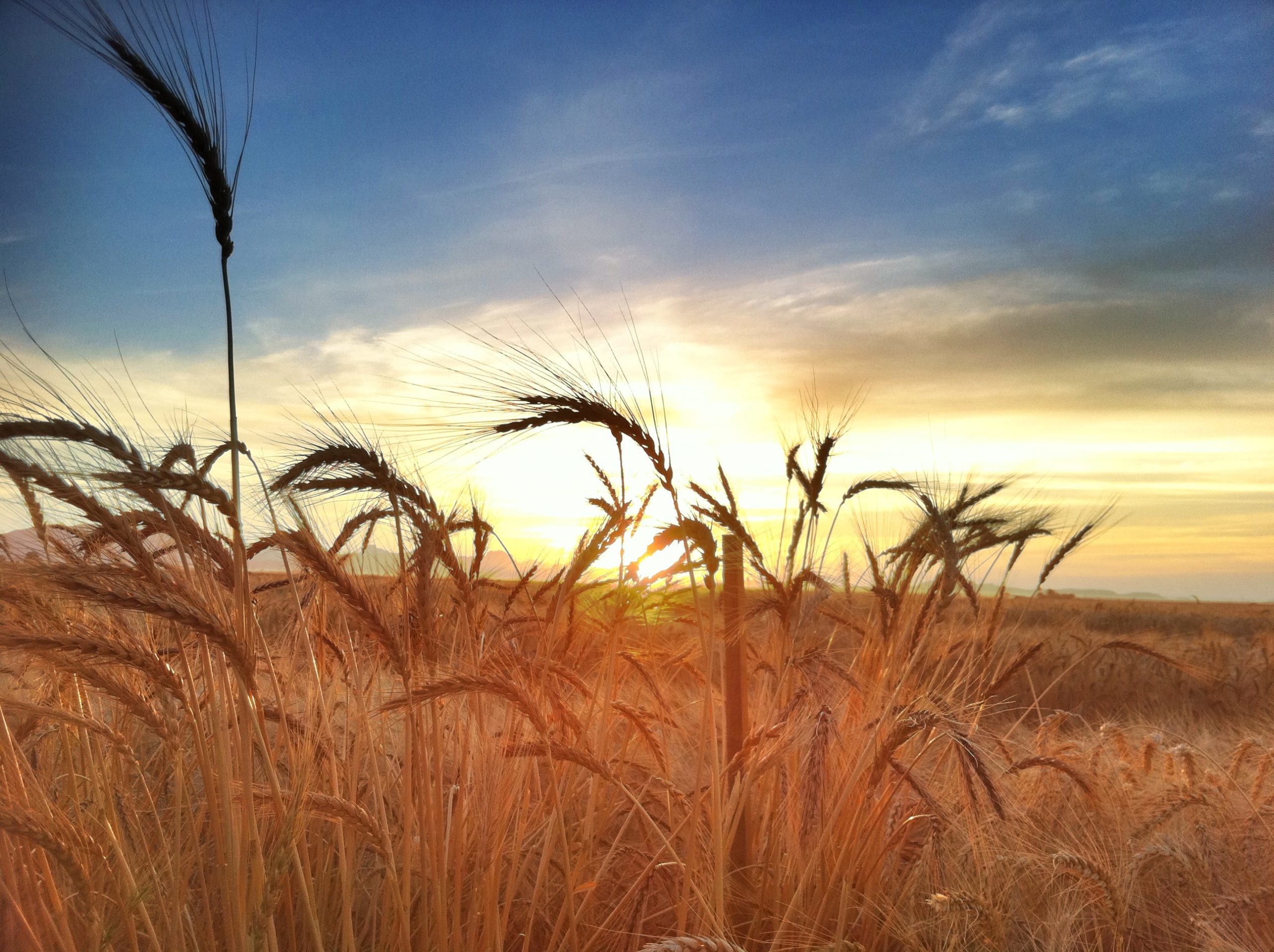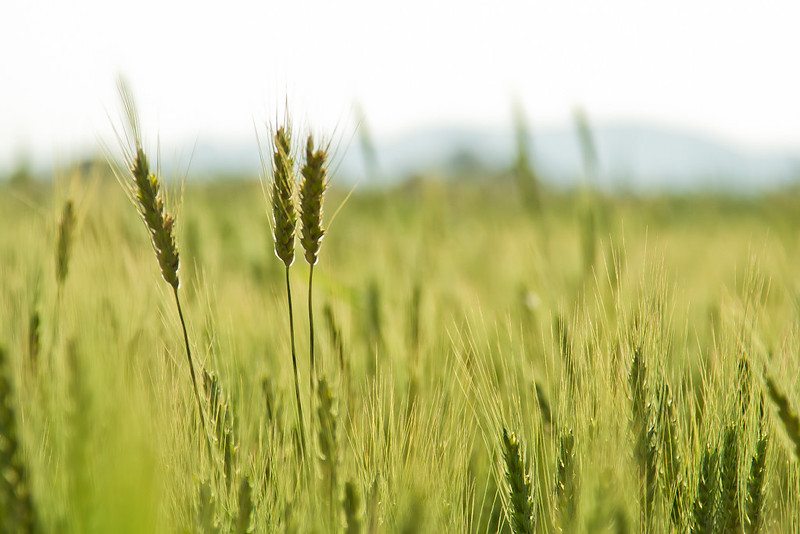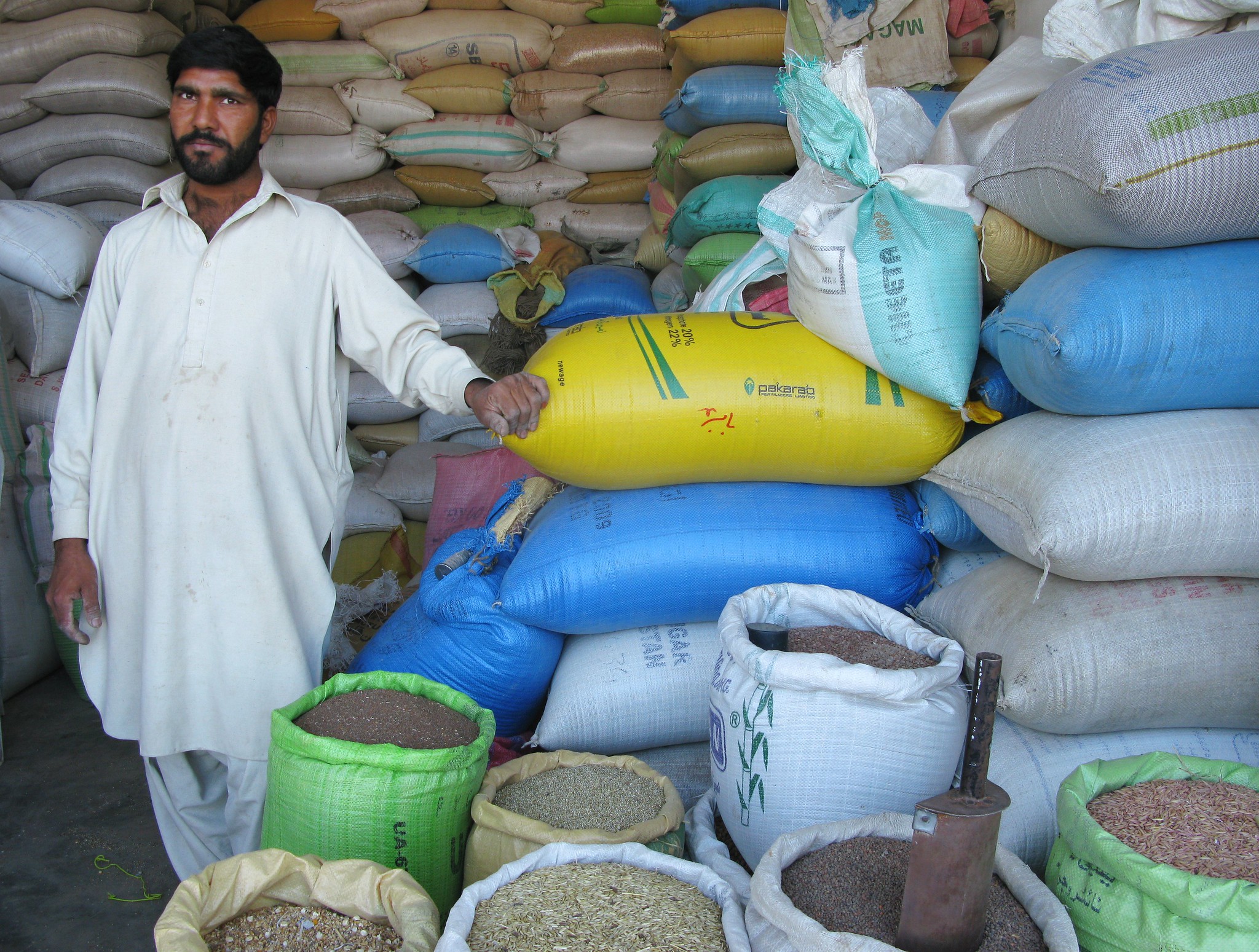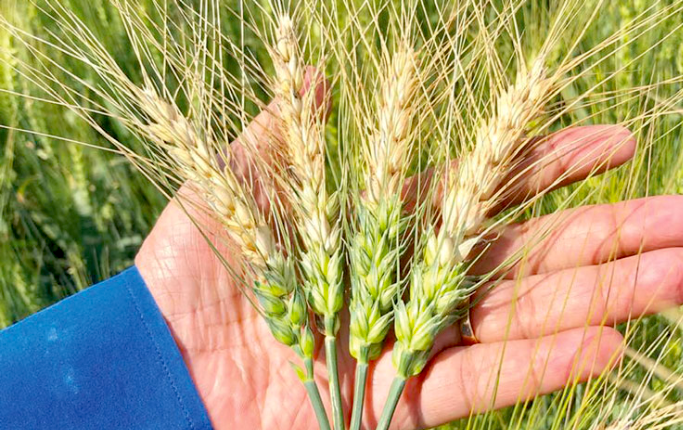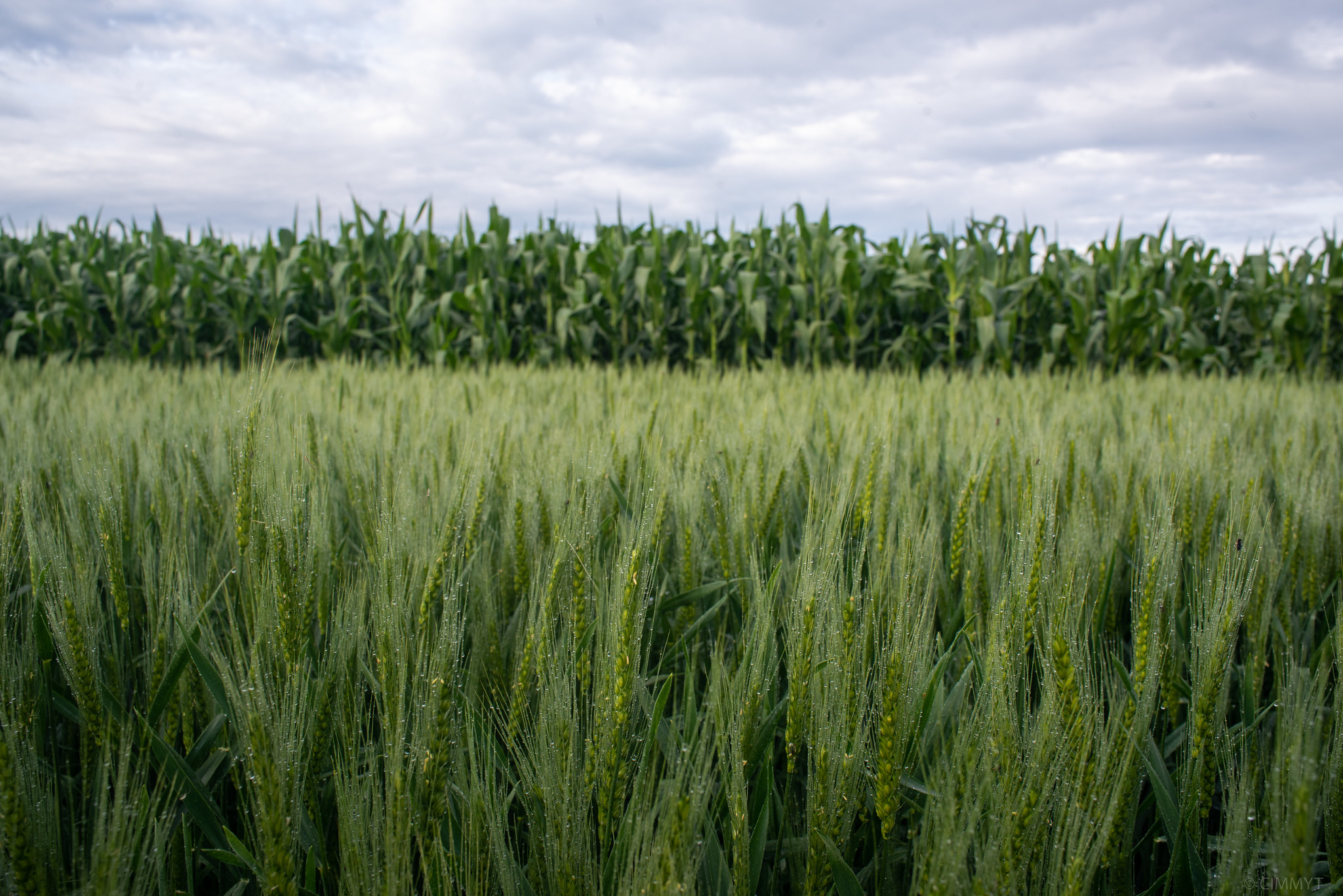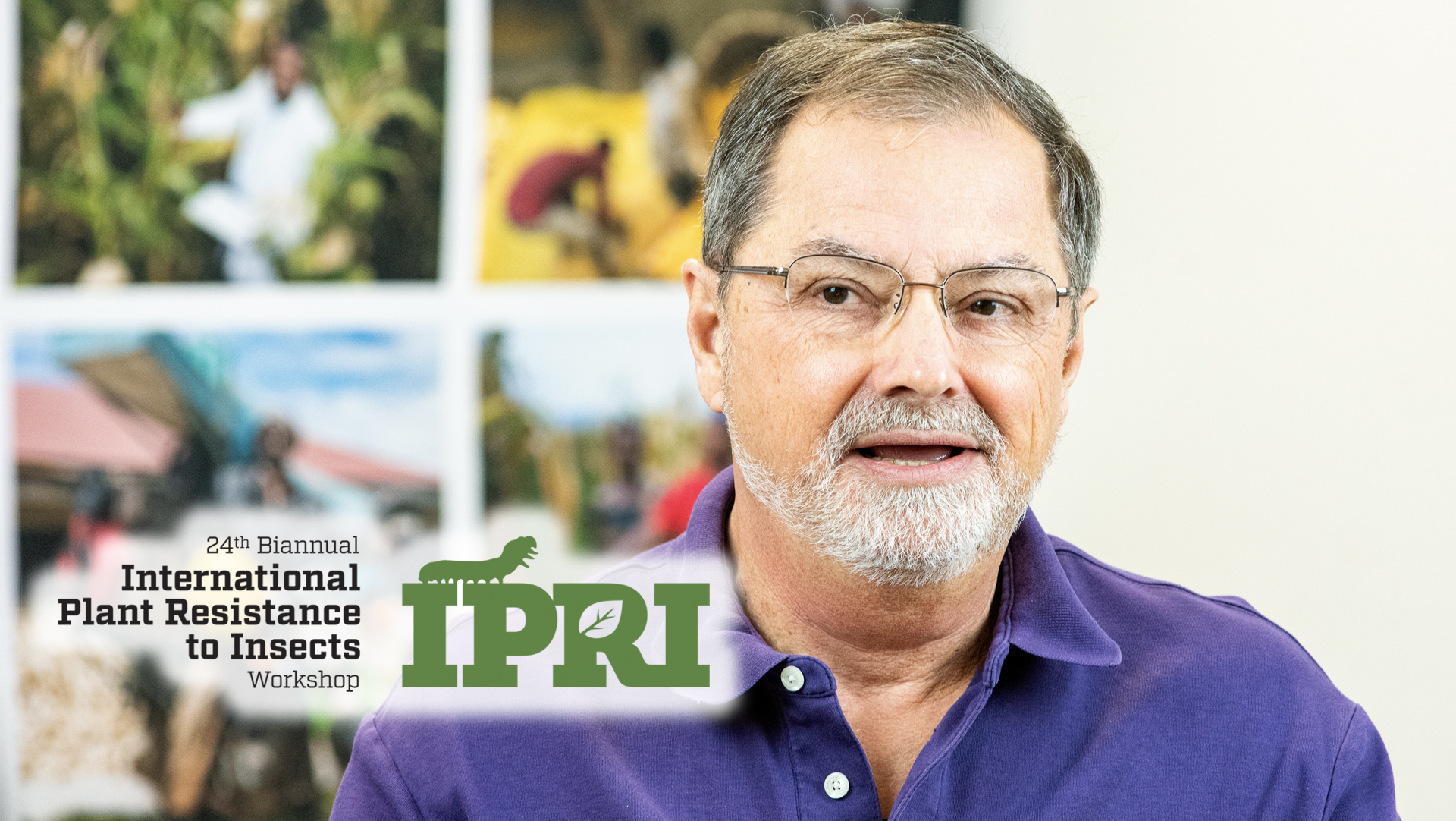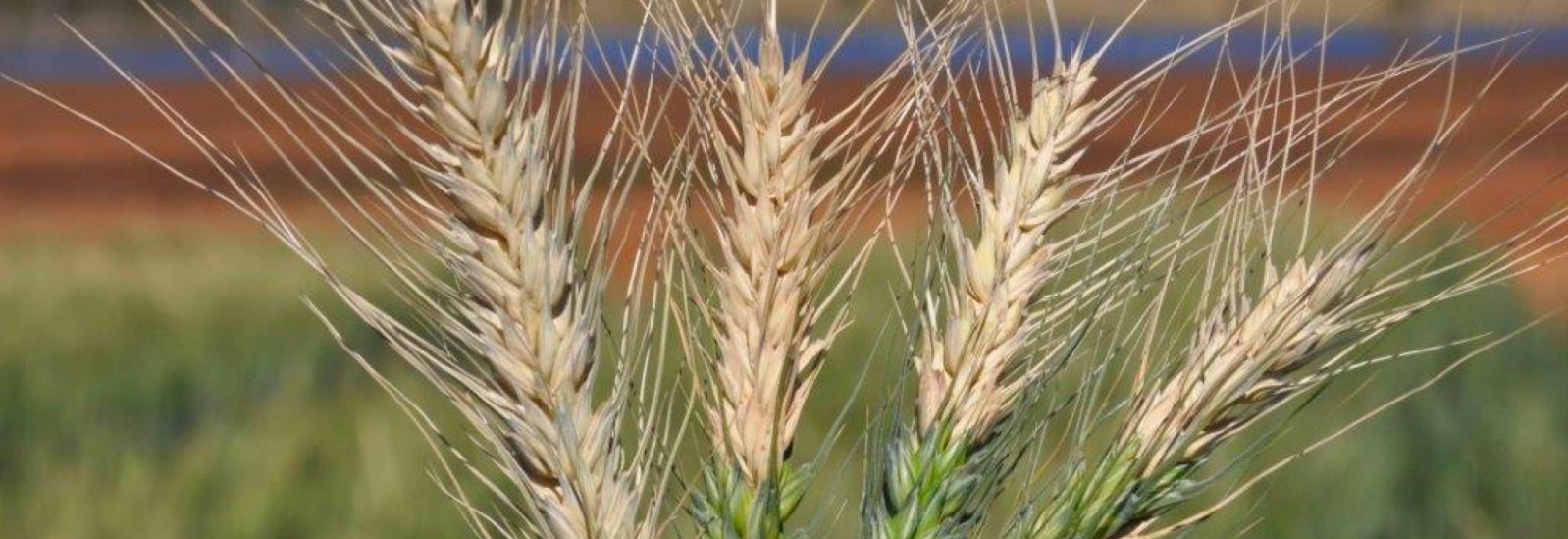Kansas State University
Examining how insects spread toxic fungi
 Climate adaptation and mitigation
Climate adaptation and mitigation
CIMMYT leads international collaboration to monitor invasive pests attacking post-harvest crops and the propagation of toxic fungi.
Zambia officials promote sustainable maize cropping practices for small-scale farmers
 Environmental health and biodiversity
Environmental health and biodiversity
The new farming methods can raise harvests, enrich soils, and capture and conserve moisture.
New publications: Genome-wide breeding to curtail wheat blast
 Environmental health and biodiversity
Environmental health and biodiversity
Researchers evaluate the use of genomic selection in wheat breeding against deadly fungal disease.
Scientists bridge theory and practice to boost climate resilience in wheat
 Climate adaptation and mitigation
Climate adaptation and mitigation
Review proposes ways to accelerate climate resilience of staple crops, by integrating proven breeding methods with cutting-edge technologies.
A challenge solved
 Environmental health and biodiversity
Environmental health and biodiversity
Massive study of breeding lines across environments pinpoints genomic regions associated with yield potential and stress-resilience in bread wheat.
Five big steps toward wheat self-sufficiency in Pakistan
 Climate adaptation and mitigation
Climate adaptation and mitigation
Pakistan’s goal to achieve self-sufficiency in wheat production just became more attainable with the release of five new wheat varieties.
First complete cytological characterization of the 2NvS translocation
 Innovations
Innovations
Study validates importance and uncovers new benefits of crucial wheat genome segment.
Scientific opportunities and challenges
 Capacity development
Capacity development
First meetings of the AGG Science and Technical Steering Committees generate insights and recommendations for optimizing breeding schemes.
New analysis to help in creating yellow rust resistant wheat
 Innovations
Innovations
Source: World Grain (15 Jul 2020)
CIMMYT scientists perform large genome-wide association study in India, Kenya and Mexico to understand yellow rust resistance in wheat.
The value of research on plant resistance to insects
 Nutrition, health and food security
Nutrition, health and food security
Entomologist and CIMMYT partner Mike Smith explains the importance of documenting the economic value of crop pest research.
What is wheat blast?
 Nutrition, health and food security
Nutrition, health and food security
Wheat blast is one of the most fearsome and intractable wheat diseases in recent decades. It spreads through infected seeds, crop residues as well as by spores that can travel long distances in the air, posing a major threat to wheat production in tropical areas.
